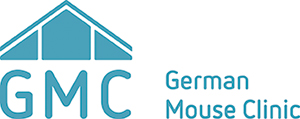To unravel whether environmental enrichment leads to a higher variation of results, scientists of the Helmholtz Zentrum München investigated the influence of enrichment on the experimental outcome of a multitude of phenotypic tests in mice. The study was recently published in `PLoS Biology `.
Adequate housing of animals is legally requested within the European Union and is required, as this ensures health and wellbeing and the latter again contribute to increased validity and reproducibility of experimental results. At the same time, there is ongoing debate if enrichment of the environment of laboratory mice leads to higher variation of results and thus, prevents the comparison between past and future experimental results.
To address this question, male and female wild-type mice of 2 commonly used inbred mouse strains, C57BL/6NTac (B6) and DBA/2NCrl (D2) were housed with 2 simple, commonly used, and easily applicable enrichment items (namely nesting material alone or in combination with a shelter) compared to a regime without any enrichment. At the German Mouse Clinic, mice from these 3 housing conditions entered the screening pipeline and behavior, dysmorphology, neurology, clinical chemistry and hematology, eye, allergy, energy metabolism, pain perception and cardiovascular health were analyzed, followed by a pathological investigation of several organs. Three independent cohorts of mice (3 replicates) were analyzed to give information about variability. The study was designed to give a broad overview of possible effects of simple enrichment on a large number of physiological parameters of different research fields. The means and the variability (expressed by coefficients of variation) of a wide range of physiological parameters were analyzed in a systematic, standardized way.
It was shown that simple, species-specific environmental enrichment in the form of nesting material alone or in combination with a shelter did not consistently increase variability of physiological parameters across the mouse strains analyzed. Even though the enrichment affected the mean of some parameters, its overall influence appeared to be of minor biological relevance compared to stronger environmental confounders represented by the cohort. The results of this study suggest that these simple environmental enrichment devices may be applied to improve the housing environment of laboratory mice without compromising data validity or comparability.
Andre V. , Gau C. , Scheideler A. , Aguilar-Pimentel A. , Amarie O.V. , Becker L. , Garrett L. , Hans W. , Hölter S.M. , Janik D. , Moreth K. , Neff F. , Östereicher M. , Rácz I. , Rathkolb B. , Rozman J. , Bekeredjian R. , Graw J. , Klingenspor M., Klopstock T. , Ollert M. , Schmidt-Weber C.B. , Wolf E. , Wurst W. , Gailus-Durner V. , Brielmeier M. , Fuchs H. , Hrabě de Angelis M. Laboratory mouse housing conditions can be improved using common environmental enrichment without compromising data. PLoS Biol 16(4): e2005019.


